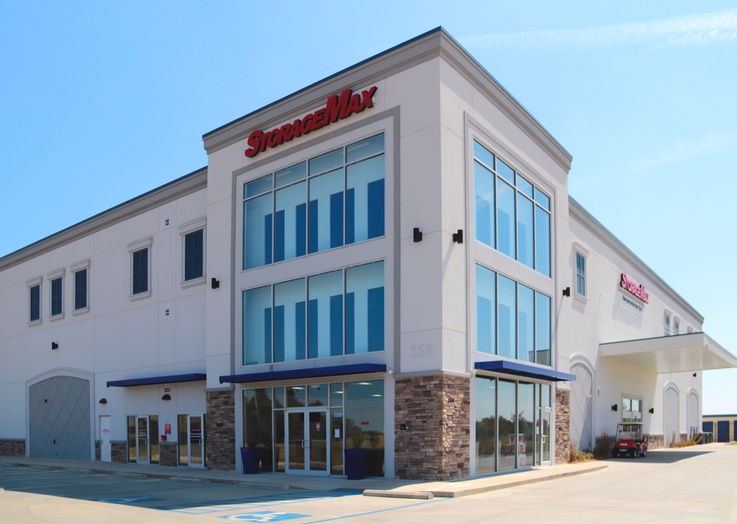Marketing Made Easy: The 10 Steps To A Foolproof Marketing Plan
Marketing your facility an important aspect to success, but it’s also one that baffles many facility owners. There are many reasons many owners don’t put together a comprehensive marketing plan. One of the reasons may be the false belief they can’t compete with the “big boys,” or REITs.
While industry standards suggest spending at least two percent of the store’s budget on marketing, some spend up to five percent. One long-time industry marketing expert, M. Anne Ballard, president of marketing, training, and developmental services for Universal Storage Group (USG) in Atlanta, Ga., says you can compete, and you can do it for less than you think if you have a good plan in place. “Most experts say you should be spending between three and six percent of your income on marketing, but we’ve never had to do that,” she says.
Depending on many factors, including location, demographics, etc., each store requires a custom marketing plan, but according to industry marketing experts, there are some tried-and-true techniques that should be incorporated into every plan:
1. Calculate your budget. According to Ballard, the first thing you need to do is calculate how much you’re planning to spend on marketing annually. She points out that your budget will usually be higher if you’re in lease-up, but you can reduce the marketing budget once you’ve reached those goals.
2. Hire the right staff. Gone are the days when a facility could hire someone who lacks a sales background and has a personality for providing great customer service. “A lot of it is getting your manager to buy in and actually do a good job on the marketing,” says Diane Gibson, president of Cox Armored Mini Storage Management, Inc., in Phoenix, Ariz. “You have to have the right people on your staff; find the ones who are comfortable with marketing and customer service.”
3. Use high touch/high tech. Digital marketing is likely where the big boys win. Still, marketing experts say you’re already competing if you have a fast website that offers “one-stop” shopping, including online reservations, rentals, and payment options. PPC or “pay-per-click” ads on various online outlets, including Google and Facebook, account for a large percentage of the marketing budget. “You should have enough of a PPC budget to at least bring your store up on the first page,” says Ballard. For USG, that averages to about $950 per month per store. For stores in lease-up, they spend at least $2,000.
Carol Mixon, owner of SkilCheck Services, Inc., in Tucson, Ariz., gives an example of a store not having enough PPC ads. “We had a store in Scottsdale that was doing very poorly. When I did a Google search, it didn’t come up in any search,” says Mixon, who remedied the situation by hiring a digital marketing company to help optimize the website’s SEO (search engine optimization) and ads.
Gibson says there are many things that are free or cost little that you can do to ensure your store is getting the online attention it needs, including using social media to communicate with your customers, as well as ensuring all your online information is correct on Google Maps and review sites.
4. Get involved with your community. This is one of the ways you can get more bang for your buck. “Self-storage is still very much a neighborhood thing,” says Ballard. “One of the most important things you can do is to be involved in the community through various outlets.”
Mixon agrees, especially in this stage of self-storage development, when owners are having to prove to cities how valuable self-storage is in the community. “The message is ‘We’re a good neighbor and want to help the community,’” she says.
One of the most visible ways to do that, suggests Mixon, is to sponsor youth sports teams, which will get your store’s names on jerseys as well as on banners at the local baseball and football stadiums.
Other ideas include being the drop-off spot for the local Toys for Tots drive and hosting fundraisers for local causes. Ballard says the key to successfully getting involved in charities is allowing the manager and staff to choose causes that are close to their hearts and matter to the community.
Finally, require your manager to join local business organizations, including the chamber of commerce. “The key to success with that is they must become involved,” says Ballard. :They can’t just pay the fee and not do anything.”
5. Put boots on the ground. While there is much to be said for digital marketing today, marketing experts will argue that nothing matches good old-fashioned boots on the ground, also known as guerilla marketing. Ballard says this is one of the most cost-effective pieces that should be a part of everyone’s marketing plan. Universal’s managers are required to visit apartment managers, real estate brokers, and HOA representatives. She cautions managers not to forget to visit businesses who may need storage, including contractors, sales representatives, business professionals who need document storage, etc. “I think most people would be surprised how many businesses need and utilize storage,” says Ballard, adding that USG’s managers also take small gifts imprinted with the store’s name and logo, as well as plenty of referral cards.
Once managers return to the office, don’t allow them to just forget about the visits. Ballard’s managers then create a database of people they’ve visited for email blasts. “People are more likely to open an email from someone they’ve actually met, rather than a stranger,” she says.
Additionally, Gibson has found door hangers to still be effective in some markets, as well as newspaper ads in smaller, community newspapers.
6. Send email blasts. Of course, to create an effective email marketing campaign, your managers need to be collecting email information from customers, people in the community they visit, and people who sign in when they visit the store for community events. Email blasts can include everything from specials and discounts to full newsletters with community events and information. A word of caution: Do not make them all about sales or people will quit opening them.
And don’t discount the word-of-mouth potential from sending emails to your current customers. “I think this is one of the most overlooked marketing targets,” says Gibson.
One of the most effective things Universal does is naming a Business of the Month in its emailed newsletter. A business offers a donation of one of its products or services and the first [X number of] people who respond are put into a drawing for the donated prize. She says pizza places are one of the best to tap. “People love to order pizza when they’re moving, so they donate a prize and tape one of our fliers to their pizza boxes for the month,” says Ballard. “It’s a win-win for both businesses.”
7. Reward referrals. Of course, you should have a good referral system in place for anyone who sends people to your store. Mixon’s facilities give a $25 referral, making it cost effective. “Most people who get referral cards don’t even use them,” she says, “but we still get the business.”
8. Host community events. Another cost-effective way to market your store is to host community events. Prior to the pandemic, USG drew 49,000 people who normally wouldn’t have come to the site to events. These can include hosting customer appreciation days, doing an annual lunch for first responders, or even holding garage sales on the property. USG’s stores have hosted 110 different types of events over the years that draw an average of 500-plus attendees for each event. “These give you the opportunity to show off your store and what you have to offer,” says Ballard.
9. Utilize signage. Online is an important aspect but drive-bys are still very important to self-storage. “Make sure your signage is in good condition and illuminated signs are working,” says Gibson. “If it is sun-damaged, replace it.”
10. Increase your curb appeal. Perhaps nothing is more important than presenting your property as clean, well manicured, well maintained, and well lit. Gibson reminds owners to ensure their managers are paying attention to the small details, including weeds, trash, and cigarette butts, because potential customers will take notice.
The bottom line, says Ballard, is to have a well-rounded, multifaceted marketing plan customized for your store that Is followed up with reports and statistics showing the results. “Putting all your eggs into one basket won’t work,” says Ballard. “Any marketing plan only works if you are also measuring the data.”
Kerri Fivecoat-Campbell is a freelance journalist based in the Ozark Mountains. She is a regular contributor to MiniCo’s publications. Her business articles have also appeared in Entrepreneur, Aol.com, MSN.com, and The Kansas City Star.
More Content
Popular Posts
Recent Posts
When Germantown High School in Gluckstadt,...
It’s comforting to know that no matter how...
A very wise self-storage expert once said...
Senate Bill 709 (SB709) has many in the...
In January, self-storage industry veteran...
In April 1984, the first non-stop commercial...
Raise your hand if you’ve ever made plans,...
Everyone knows it: Investing in real estate...









